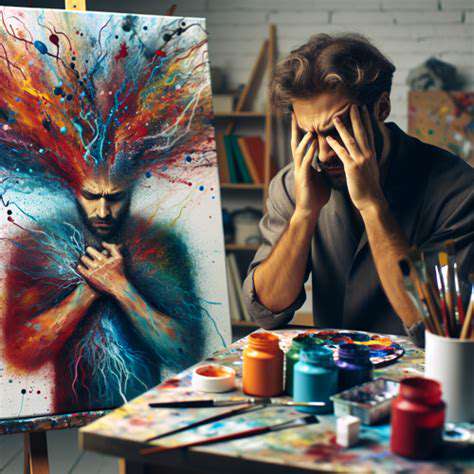Practical stress reduction isn't just helpful - it's medically significant. When patients in clinical trials adopted meditation practices, many reported 40-50% fewer migraine days within three months. The key lies in recognizing individual stress patterns before they escalate into full attacks.
Creative Outlets as Stress-Reducing Tools
Neurologists observe something fascinating about creative engagement: the brain enters a state resembling flow meditation. This explains why painting or writing often provides more relief than passive relaxation. The rhythmic brushstrokes or typing motions create a biological counterpoint to stress hormones.
Consider journaling's documented effects: patients who wrote about emotional triggers for 20 minutes daily showed measurable decreases in cortisol levels. This biochemical shift makes creative practices more than hobbies - they're preventative medicine for migraine-prone brains.
Art Therapy for Migraine Management
Clinical art therapy differs from casual creativity through structured emotional processing. Therapists guide patients to visualize pain or anxiety through symbols, creating tangible representations of abstract suffering. This externalization provides surprising relief - many report their headaches feel less personal afterward.
Writing as a Form of Emotional Processing
The pen's power lies in its ability to slow racing thoughts to handwriting speed. Unlike frantic mental worrying, writing forces linear processing that organizes chaotic emotions. Studies demonstrate that migraineurs who journal before bed experience fewer nighttime attacks, likely due to reduced cortisol spikes.
Creative writing offers additional benefits by engaging the brain's problem-solving regions. Crafting fictional narratives about pain creates psychological distance, while poetry's rhythm can regulate breathing patterns disrupted by stress.
The Power of Mindfulness in Creative Expression
Mindfulness transforms art from distraction to neurological retraining. When painters focus solely on color blending, they activate the prefrontal cortex's control over the amygdala's fear responses. This neural workout strengthens the brain's ability to short-circuit migraine triggers.
The most effective practices combine sensory focus with non-judgment. For example, clay sculpting while noticing textures without critique creates dual benefits: tactile grounding plus breaking perfectionism's stress cycle.
